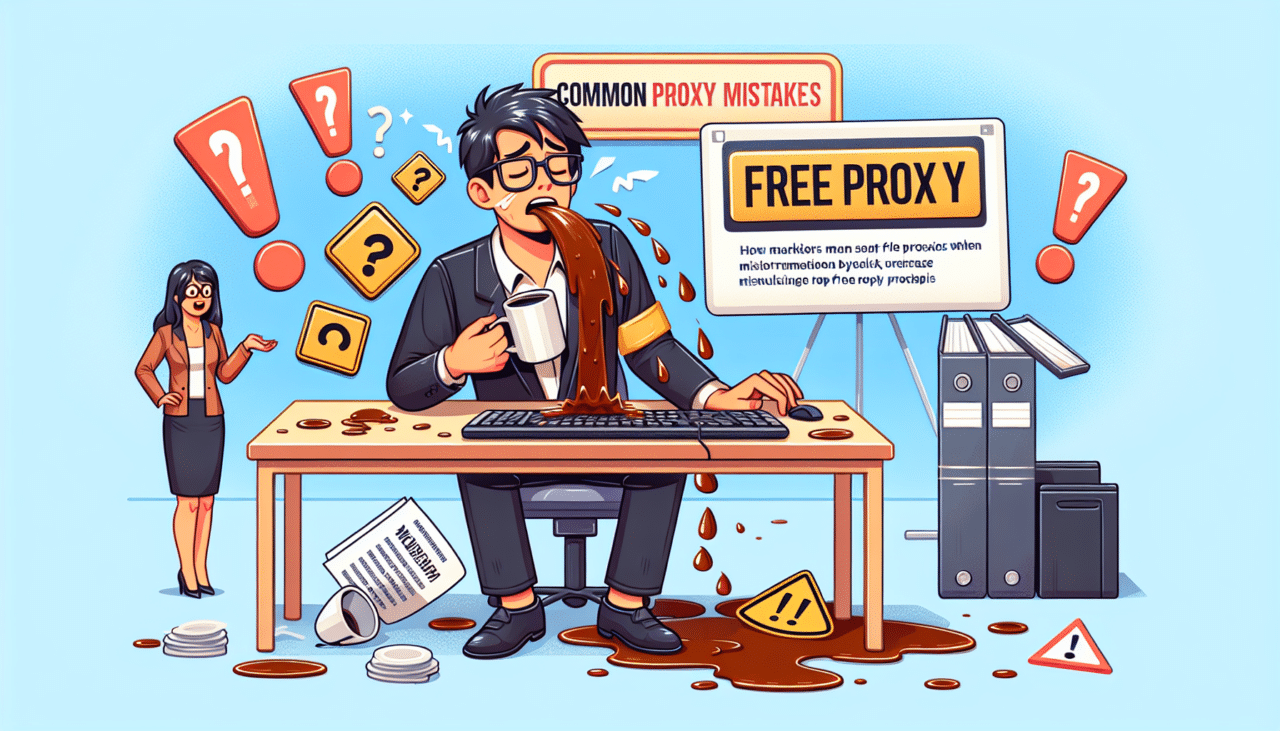In today’s digitally-driven marketing landscape, proxies have become indispensable tools for marketers. They offer anonymity, enable access to geo-restricted content, and allow for efficient web scraping. However, the allure of free proxies often leads marketers to overlook significant pitfalls. In this article, we delve into the common mistakes marketers make when opting for free proxies and provide insights on how to avoid them.
Understanding Proxies
Before diving into the mistakes, it’s essential to grasp what proxies are. A proxy server acts as an intermediary between a user’s device and the internet. When a request is made through a proxy, it forwards it to the target server on behalf of the user, thereby masking the user’s original IP address.
The Appeal of Free Proxies
Free proxies are attractive primarily because they don’t cost anything. For businesses operating on tight budgets, free proxies seem like a convenient option for tasks such as accessing geo-blocked content, conducting market research, and automating social media activities. However, the saying “you get what you pay for” often rings true.
Common Mistakes Marketers Make
1. Ignoring Security Risks
Mistake: Many marketers assume that all proxies offer the same level of security, but free proxies often lack adequate security measures.
Explanation: Free proxies are notorious for their lack of encryption and security protocols. This vulnerability exposes sensitive data to potential interception, making marketers susceptible to data breaches.
Solution: Always opt for proxies that offer robust security features. If the budget is tight, consider using a reputable paid proxy service that provides encryption and anonymity.
2. Overlooking Speed and Reliability
Mistake: Marketers often expect free proxies to perform as efficiently as paid ones.
Explanation: Free proxies typically have limited bandwidth and are shared by numerous users, leading to slow connections and frequent downtime. This unreliability can significantly impact time-sensitive marketing activities.
Solution: For critical tasks, invest in a reliable paid proxy that guarantees consistent speed and uptime. Evaluate proxy services based on their performance metrics before committing.
3. Neglecting IP Rotation
Mistake: Using a static IP address for all marketing activities.
Explanation: Many free proxies offer only a single IP address, which can quickly become flagged or banned by target websites if used extensively.
Solution: Use proxies that support IP rotation to distribute requests across multiple IP addresses, reducing the risk of bans and ensuring seamless operations.
4. Failing to Test Proxies
Mistake: Marketers often take proxies at face value without testing their performance.
Explanation: Not all proxies perform equally well across different tasks. Failing to test can lead to unexpected failures during crucial campaigns.
Solution: Implement a testing protocol to assess the speed, reliability, and security of proxies before integrating them into marketing operations. Here’s a simple Python script to test proxy speed:
import requests
from time import time
def test_proxy(proxy):
url = "http://www.google.com"
proxies = {"http": proxy, "https": proxy}
start_time = time()
try:
response = requests.get(url, proxies=proxies, timeout=5)
response.raise_for_status()
end_time = time()
print(f"Proxy {proxy} is working. Response time: {end_time - start_time:.2f} seconds.")
except requests.RequestException as e:
print(f"Proxy {proxy} failed. Error: {str(e)}")
# Example usage
test_proxy("http://your.proxy.ip:port")
5. Over-Reliance on Free Proxies
Mistake: Using free proxies as a permanent solution for all proxy needs.
Explanation: Free proxies can be useful for occasional tasks, but relying on them for all operations can lead to inefficiencies and security issues.
Solution: Evaluate the specific needs of each marketing task and allocate resources accordingly. For high-stakes activities, prioritize paid proxies.
Conclusion
While free proxies can be a valuable resource for marketers, they come with inherent risks and limitations. By understanding and avoiding the common mistakes outlined above, marketers can make informed decisions that safeguard their operations and optimize their strategies.
Summary Table
| Mistake | Explanation | Solution |
|---|---|---|
| Ignoring Security Risks | Lack of encryption exposes data to breaches. | Use proxies with strong security features. |
| Overlooking Speed and Reliability | Free proxies are slow and unreliable. | Invest in paid proxies for crucial tasks. |
| Neglecting IP Rotation | Static IPs risk bans from target websites. | Use IP rotation to distribute requests. |
| Failing to Test Proxies | Unverified proxies may fail during campaigns. | Test proxies before use. |
| Over-Reliance |

Comments (0)
There are no comments here yet, you can be the first!